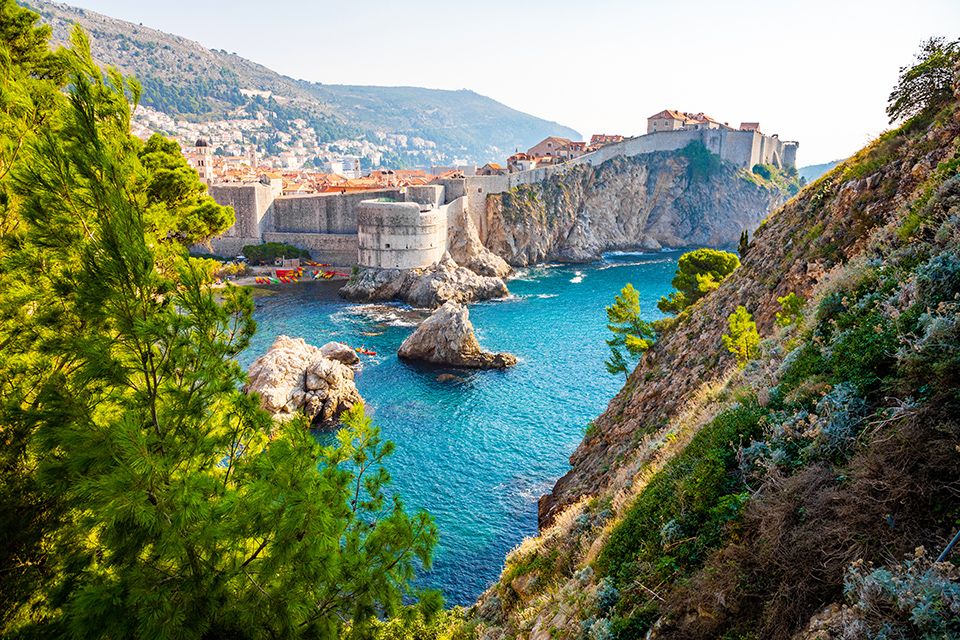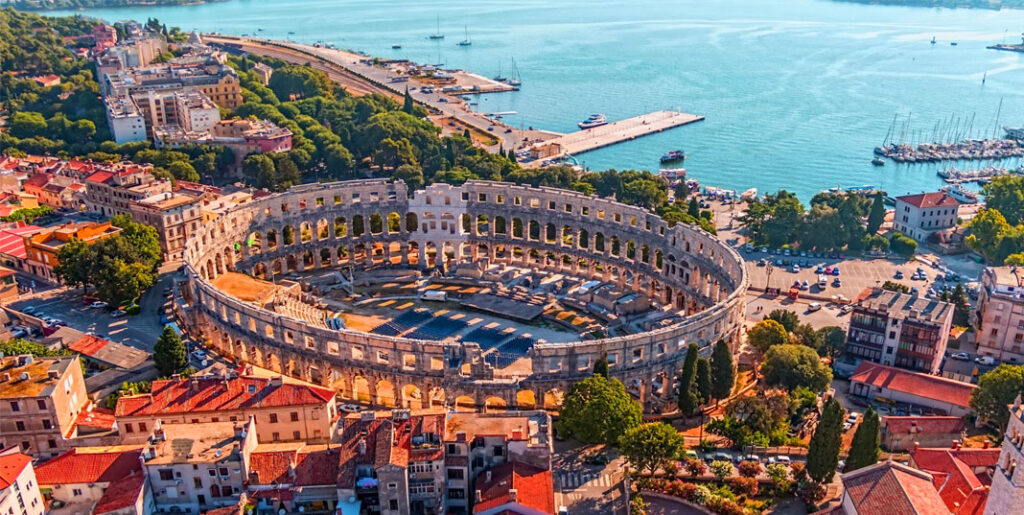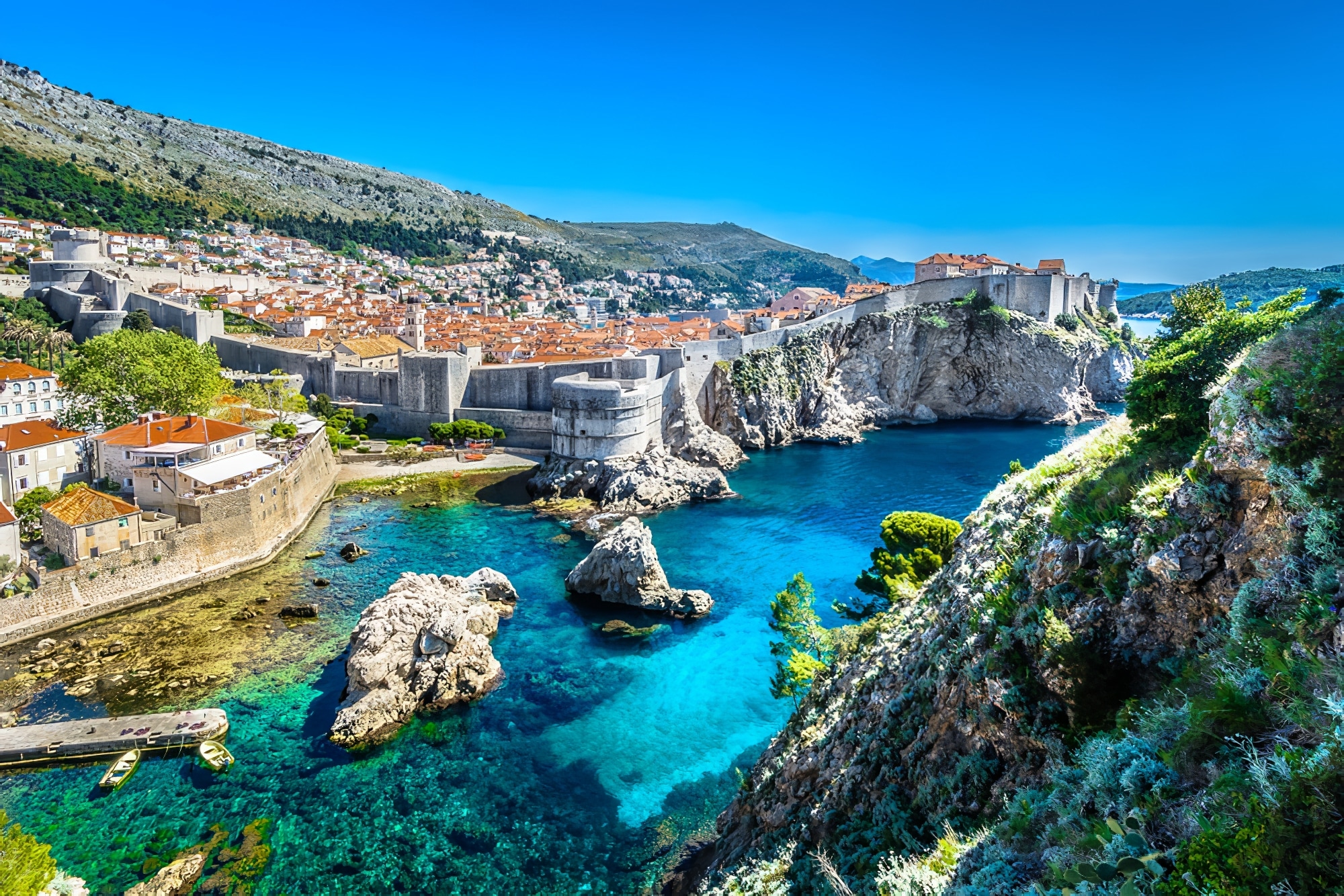
Croatia, a jewel nestled along the Adriatic Sea, beckons with its crystalline waters, ancient cities, and a history as rich and layered as its culinary traditions. From the Roman grandeur of Diocletian’s Palace to the breathtaking natural spectacle of Plitvice Lakes, this Balkan beauty offers an unforgettable tapestry of experiences for every traveler. Whether you’re a history buff, an adventure seeker, a sun-worshipper, or a gastronome, Croatia will weave its magic around you.
The Crown Jewels: Top Attractions in Croatia
Croatia’s coastline is studded with islands and dotted with historic towns, while its interior boasts national parks of unparalleled beauty. Here are some of the absolute must-see attractions:

Related Articles about Croatia: A Sun-Kissed Symphony of History, Beauty, and Adventure:
- Beyond the K-Wave: Unveiling the Treasures of South Korea
- Miami: A Kaleidoscope of Culture, Sun, and Unforgettable Experiences
- Brazil: A Symphony of Sun, Samba, and Unforgettable Adventures
- Discover Denmark: A Guide to Hygge, History, and Happening Adventures
- Austria’s Enchanting Embrace: A Guide to its Finest Hotels and Unforgettable Experiences
1. Dubrovnik: The Pearl of the Adriatic
No trip to Croatia is complete without a visit to Dubrovnik. This UNESCO World Heritage city is famed for its remarkably preserved medieval city walls, which encircle a labyrinth of charming cobblestone streets, Baroque churches, and terracotta-roofed houses.
- What to Do: Walk the iconic city walls for panoramic views of the Old Town and the azure sea. Explore the Stradun, the main promenade, and soak in the atmosphere. Visit the Rector’s Palace, a stunning example of Gothic-Renaissance architecture, and the Franciscan Monastery, home to one of the oldest pharmacies in Europe. For Game of Thrones fans, Dubrovnik is King’s Landing, and you can embark on themed tours to relive your favorite scenes.
- Why it’s special: Dubrovnik’s resilience and beauty are awe-inspiring. It has witnessed centuries of history, from its independent republic days to its recent wartime scars, and has emerged as a vibrant and captivating destination.
2. Plitvice Lakes National Park: A Natural Masterpiece
Prepare to be mesmerized by the sheer natural beauty of Plitvice Lakes National Park, another UNESCO World Heritage site. This park is a wonderland of 16 terraced lakes, interconnected by a series of cascading waterfalls and streams. The water’s vibrant turquoise and emerald hues are a result of minerals and organisms, creating a surreal and ever-changing spectacle.
- What to Do: Follow the well-maintained wooden boardwalks that wind through the park, allowing you to get up close and personal with the waterfalls. Take a boat ride across the larger lakes and hike the various trails for different perspectives. The Upper Lakes are characterized by their gentler cascades, while the Lower Lakes boast dramatic, powerful waterfalls.
- Why it’s special: Plitvice is a testament to the raw power and exquisite artistry of nature. The constant flow of water, the lush greenery, and the vibrant colors create an almost ethereal atmosphere.

3. Split: The Heart of Dalmatia
Split is a city that seamlessly blends ancient history with a vibrant modern pulse. Its heart is the magnificent Diocletian’s Palace, a UNESCO World Heritage site that is not just a historical monument but a living, breathing part of the city.
- What to Do: Wander through the ancient walls of Diocletian’s Palace, a sprawling complex that once housed a Roman emperor. Explore its cellars, the Peristyle (the palace’s central square), and the Cathedral of Saint Domnius, built within the emperor’s mausoleum. Climb the bell tower for stunning city views. Enjoy the lively Riva promenade, lined with cafes and shops, and soak in the Mediterranean lifestyle.
- Why it’s special: The sheer audacity of building a palace that later became a city is remarkable. Split offers a unique opportunity to step back in time while experiencing the energy of contemporary Croatian life.
4. Hvar: The Island of Sunshine and Glamour
Hvar is Croatia’s most glamorous island, renowned for its lavender fields, ancient olive groves, crystal-clear waters, and a vibrant nightlife. It’s a playground for celebrities and those seeking a sophisticated island escape.
- What to Do: Explore Hvar Town with its picturesque harbor, impressive fortress, and lively squares. Visit the Pakleni Islands, a stunning archipelago of secluded coves and turquoise bays, perfect for swimming and snorkeling. Indulge in wine tasting at local vineyards, discover hidden beaches, and enjoy the island’s renowned seafood.
- Why it’s special: Hvar offers a perfect blend of natural beauty, historical charm, and a sophisticated, lively atmosphere. It’s an island that caters to both relaxation and revelry.
5. Korčula: The Birthplace of Marco Polo
Often referred to as "Little Dubrovnik," Korčula is a charming island town steeped in history and legend. It’s famously claimed as the birthplace of the renowned explorer Marco Polo.
- What to Do: Explore the walled Old Town, with its narrow, fishbone-shaped streets designed to catch the cooling sea breeze. Visit the alleged birthplace of Marco Polo, climb the bell tower of St. Mark’s Cathedral for panoramic views, and witness a traditional Moreška sword dance, a vibrant cultural spectacle. Enjoy the island’s beautiful beaches and vineyards.
- Why it’s special: Korčula offers a more tranquil and authentic island experience compared to some of its more bustling counterparts, while still boasting a rich history and stunning architecture.
6. Zadar: The City of Sunsets and Sea Organs
Zadar is a city that captivates with its unique blend of ancient Roman ruins, medieval churches, and innovative modern art installations. It’s a city that truly engages the senses.
- What to Do: Witness the breathtaking sunset from the Riva promenade, accompanied by the mesmerizing melodies of the Sea Organ, an architectural sound art installation played by the waves. Explore the Roman Forum, the Church of St. Donatus, and the numerous medieval churches. Visit the Museum of Ancient Glass and the contemporary Greeting to the Sun installation.
- Why it’s special: Zadar offers a unique sensory experience, where history, art, and nature converge to create something truly unforgettable.
7. Rovinj: The Jewel of Istria
Nestled on the Istrian peninsula, Rovinj is a postcard-perfect fishing town that exudes Mediterranean charm. Its colorful buildings cascade down to the azure sea, crowned by the imposing Church of St. Euphemia.
- What to Do: Get lost in the winding, cobblestone streets of the Old Town, explore the vibrant harbor, and climb the bell tower of St. Euphemia’s Church for breathtaking panoramic views of the Adriatic. Enjoy fresh seafood at waterfront restaurants and explore the surrounding Istrian countryside, known for its truffles and vineyards.
- Why it’s special: Rovinj’s picturesque setting, its rich history, and its relaxed yet vibrant atmosphere make it a truly enchanting destination.
A Glimpse into Croatia’s Rich History
Croatia’s history is a compelling narrative of empires, invasions, and periods of great cultural flourishing.
- Ancient Roots: The land has been inhabited since prehistoric times. The Illyrians were the indigenous people, later conquered by the Romans in the 2nd century BC. The Romans left an indelible mark, evident in the magnificent structures like Diocletian’s Palace in Split and the Pula Arena.
- The Arrival of Slavs: In the 7th century, Slavic tribes migrated to the region, forming various principalities.
- Kingdom of Croatia: In the 10th century, the Kingdom of Croatia was established, marking a period of independence and regional influence.
- Union with Hungary: From the 12th century onwards, Croatia entered into a personal union with the Kingdom of Hungary, a relationship that lasted for centuries.
- Ottoman and Habsburg Rule: The Ottoman Empire posed a significant threat, leading to centuries of conflict and territorial struggles. Much of Croatia eventually fell under Habsburg rule, contributing to its Central European influences.
- Yugoslavia: After World War I, Croatia became part of the Kingdom of Yugoslavia and later the Socialist Federal Republic of Yugoslavia.
- Independence: Following a turbulent period and a devastating war in the early 1990s, Croatia declared its independence in 1991 and has since emerged as a proud and prosperous nation.
Navigating Croatia: Travel Tips for a Seamless Journey
To make the most of your Croatian adventure, keep these travel tips in mind:
- Currency: The official currency is the Euro (€). Credit cards are widely accepted in hotels, restaurants, and larger shops, but it’s always good to have some cash for smaller establishments and local markets.
- Language: The official language is Croatian. English is widely spoken in tourist areas, hotels, and restaurants, especially by younger generations. Learning a few basic Croatian phrases will be appreciated.
- Visas: Croatia is a member of the European Union and the Schengen Area. Check visa requirements based on your nationality.
- Tipping: Tipping is not mandatory but is appreciated for good service. In restaurants, rounding up the bill or leaving 5-10% is customary.
- Safety: Croatia is a very safe country with a low crime rate. However, as with any travel, it’s wise to be aware of your surroundings, especially in crowded tourist areas.
- Drinking Water: Tap water is generally safe to drink throughout Croatia.
- Sun Protection: The Mediterranean sun can be intense, especially during summer. Pack sunscreen, a hat, and sunglasses.
- Respect Local Customs: Be mindful of local customs and traditions, especially when visiting churches or religious sites. Dress modestly when entering religious buildings.
- Book in Advance: During peak season (July and August), it’s highly recommended to book accommodation, popular tours, and ferry tickets well in advance.
Where to Rest Your Head: Accommodation Options
Croatia offers a diverse range of accommodation to suit every budget and preference:
- Hotels: From luxurious five-star resorts to charming boutique hotels, you’ll find a wide selection across the country, particularly in major cities and popular coastal towns.
- Apartments and Private Rentals: This is an increasingly popular option, offering more space, privacy, and often a kitchen, which can be a cost-effective choice, especially for families or longer stays. Websites like Airbnb and Booking.com are excellent resources.
- Guesthouses (Pansions): These are typically family-run establishments offering a more intimate and personalized experience, often with breakfast included.
- Hostels: For budget travelers, hostels provide affordable dorm rooms and private rooms, as well as social atmospheres and opportunities to meet other travelers.
- Camping: Croatia has numerous well-equipped campsites, particularly along the coast and near national parks, offering a connection with nature.
Getting Around Croatia: Transportation Options
Croatia’s well-developed infrastructure makes it relatively easy to travel between destinations:
- By Air: The main international airports are in Zagreb, Dubrovnik, Split, Zadar, and Pula. Domestic flights connect major cities, though traveling by bus or ferry is often more scenic and practical for exploring the coast.
- By Bus: Croatia has an extensive and efficient bus network, connecting most towns and cities. Buses are comfortable, frequent, and a cost-effective way to travel.
- By Train: The train network is less extensive than the bus network, primarily connecting inland cities. It can be a more scenic way to travel between certain destinations.
- By Ferry: For island hopping and coastal travel, ferries are essential. Jadrolinija is the main ferry operator, with routes connecting the mainland to numerous islands. Catamaran services offer faster journeys between popular islands.
- By Car: Renting a car offers the most flexibility, allowing you to explore at your own pace and discover hidden gems. Roads are generally well-maintained, but be aware of narrow coastal roads and potentially busy traffic during peak season.
- Within Cities: Most cities are walkable, and many have local bus services. Taxis are available, but agreeing on a price beforehand or ensuring the meter is used is advisable.
When to Visit Croatia: Embracing the Seasons
Croatia offers a distinct charm throughout the year, but the best time to visit depends on your priorities:
- Spring (April-May): This is a beautiful time to visit, with pleasant temperatures, blooming wildflowers, and fewer crowds. It’s ideal for exploring cities, hiking, and enjoying outdoor activities before the summer heat.
- Summer (June-August): This is peak season, characterized by hot, sunny weather, perfect for beach holidays and swimming. The sea is warm, and the islands are buzzing with activity. However, expect larger crowds and higher prices.
- Autumn (September-October): Another excellent time to visit, with warm, pleasant weather, fewer tourists, and beautiful autumn colors. The sea is still warm enough for swimming in early autumn, and it’s a great time for exploring cities, wine regions, and hiking.
- Winter (November-March): While not ideal for beach holidays, winter offers a different perspective. Cities are quieter, and you can experience a more local feel. Some coastal towns can be quite deserted, but Zagreb and larger cities offer festive Christmas markets and cultural events. Skiing is possible in some inland regions.
In Conclusion:
Croatia is a destination that truly has it all. From its captivating historical sites and breathtaking natural wonders to its vibrant culture and delicious cuisine, it promises an unforgettable journey. Whether you’re drawn to the ancient allure of Dubrovnik, the ethereal beauty of Plitvice Lakes, the lively charm of Split, or the sun-drenched islands, Croatia will undoubtedly leave an indelible mark on your soul. So, pack your bags, embrace the adventure, and let the magic of Croatia unfold before you.





